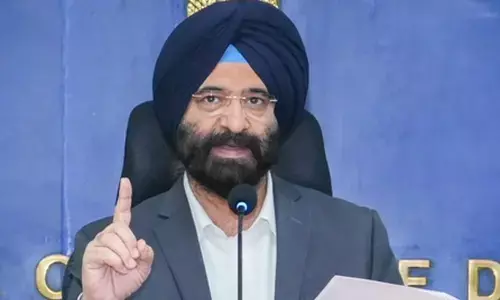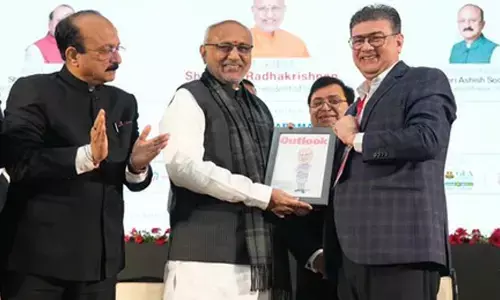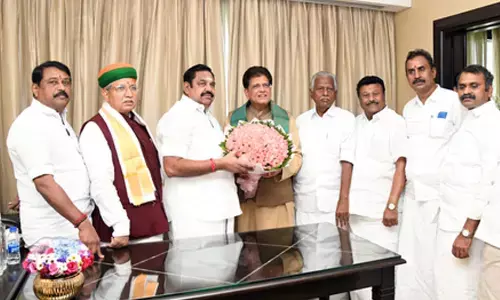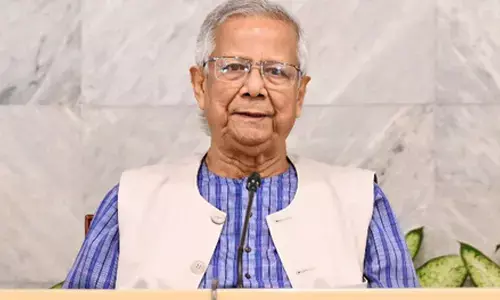Evolution of election process in India and the way forward
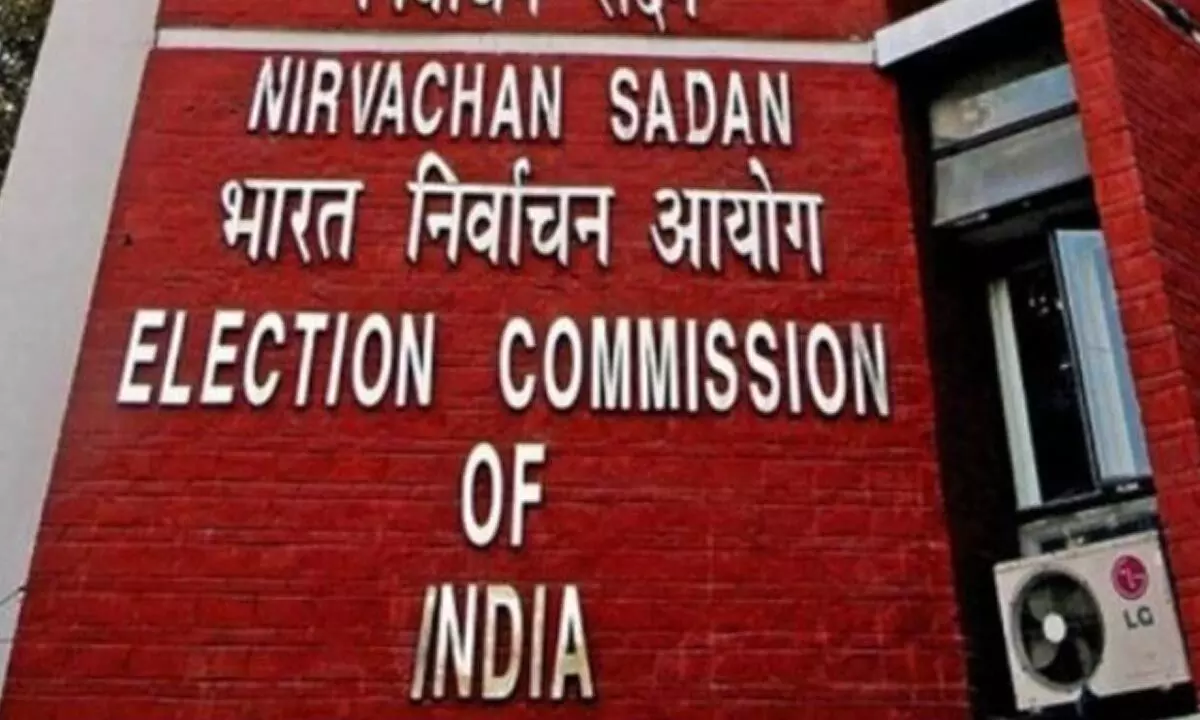
Election Commission
Telangana State is in the midst of Assembly Elections. India is the world’s most populous democracy holding largest national elections
Telangana State is in the midst of Assembly Elections. India is the world’s most populous democracy holding largest national elections. Electorate size and number of contestants are always very large. Contestants representing National or Regional Parties and as independents are in the fray. Some Parties and individuals also contest elections to split votes either to benefit a party or to harm a party for obvious reasons. In spite of this latter development, elections held in India in furtherance of Indian tradition and style of democracy are unique in the world.
The first ever General Elections were held to the Lok Sabha and the State Legislative Assemblies simultaneously during 1951-52. Every citizen above 21 years (now it is 18 years) of age was eligible to vote. It was an enormous task to enroll every adult citizen. The global community witnessed the elections with great interest. The first CEO of India Sukumar Sen oversaw the elections. World had taken notice of elections in India and journalists, politicians and observers from numerous countries descended upon India to see its novel experiment of adult suffrage.
Two bulls with yoke, tree, hand, hut, ears of corn with sickle etc., were some of the election symbols then. The indelible ink for application on voter’s finger was developed by Indian Council of Scientific and Industrial Research in 1951. Initially metal boxes and wooden boxes were used to receive ballots because each candidate was assigned one box then. Some voters regarded ballot boxes as objects of worship and dropped flowers and some dropped papers hurling abuses to a particular candidate.
India has Constitutionally guaranteed independent Election Commission (CEC), whose head can be removed only through a parliamentary impeachment, from the ‘day one’ when the Constitution was adopted on November 26, 1949. CEC was a sole-member body from March 21, 1950 to October 15, 1989 and then again from January 2, 1990 to September 30, 1993. Since October 1, 1993 the Commission became a three-member body. Every state and union territory has a Chief Electoral Officer (CEO) as the representative of the Election Commission of India. The CEC announces the schedule of elections after considering various factors.
Beginning with Sukumar Sen as the first Chief Election Commissioner, several luminaries occupied the seat. To mention names of them, we had, KVK Sundaram, SP Sen Verma, Nagendra Singh, T Swaminathan, SL Shakdhar, RK Trivedi, RVS Peri Sastri, VS Ramadevi, TN Seshan, MS Gill, JM Lyngdoh, TS Krishnamurthy, BB Tandon, N Gopalswamy, Navin B Chawla, SY Quraishi, VS Sampath, HS Brahma, Dr Nasim Zaidi, Achal Kumar Jyoti, Om Prakash Rawat, Sunil Arora, Sushil Chandra, and Rajiv Kumar. Present Chief Election Commissioner, Rajiv has been serving since September 1, 2020. He is the 25th CEC of the country.
The new ballots, known as Electronic Voting Machines (EVMs) trimmed the bulk and the cost of election material, lessened manpower requirement, eliminated invalid voting and accelerated the counting process. It is also believed that they are totally tamperproof, despite doubts expressed by some here and there. EVM is the voting process, using electronic means, to either aid or take care of the responsibilities of casting and counting votes.
EVM is designed with a control unit and balloting unit. They are joined together by a cable. Control unit is kept with the Presiding Officer or Polling Officer. The balloting unit is kept within the voting compartment for electors to cast their votes. This is done to ensure that polling officer verifies voter’s identity. With EVM, instead of earlier practice of issuing a ballot paper, polling officer will press the Ballot Button which enables voter to cast vote. A list of candidates’ names and symbols will be available on the machine with a blue button next to it. Voter can press the button next to the candidate’s name they wish to vote for.
Election Commission of India introduced the ‘None of The Above’ (NOTA) option on EVMs in accordance with the orders of Apex Court in 2013, giving a choice to electors who do not wish to vote for any of the candidates. Voter Verifiable Paper Audit Trail (VVPAT) that was first used in Noksen Assembly segment in Nagaland in September 2013 enabling voter to verify that their vote has gone to the intended candidate only, was also introduced.
To do away with imposters personating as voters listed on Electoral Roll, Photo Identity Card (EPIC) was introduced. With the passage of time, the EPIC became a valid ID card-cum-address proof. The first pilot project for issuing EPIC was taken up as early as in 1960 in Calcutta South West Parliamentary Constituency and at national level in August 1993. Electoral Rolls which were made available only in couple of hard copies, gradually have been computerized. Now it is time that an IT-enabled technology solution in the form of ‘Anytime, Anywhere Voting’ is introduced with a ‘Permanent Social Security Number Card’ for a better poll exercise.
The Model Code of Conduct (MCC), which lacks statutory or legal backing, is a set of directives applicable to political parties and candidates. MCC purpose is to keep campaigning, polling, and counting orderly; prevent any breach of peace; and check abuse of state machinery and finances to the benefit of party in power. It is in force from date of announcement of elections’ schedule till declaration of results. However, except symbolic confiscations at some places, there has been no stern initiative of Election Commission of India (ECI). Quite often, on false alarm, innocent, reputed, highly honest individuals are being targeted for no fault of them, whereas culprits are left scot-free. Therefore, Parliament needs to deliberate on such serious issues, including huge poll expenditure for campaigns, and exorbitant election funding.
It is unfortunate that ECI, supposed to be an autonomous constitutional authority, limits itself to the responsibility of merely administering elections to Lok Sabha, Rajya Sabha, State Legislative Assemblies and the offices of President and Vice-President in the country. This responsibility it shoulders only when it is mandatory or obligatory which happened once in five years in the beginning days after independence and later, now happening, as and when elections were called for either in the whole country or in a state. It forgets that it must be cognizant of partisan, dishonest promises to lure the people.
It is also unfortunate that the Election Commission seldom exhibits its authority and responsiveness when election process does not take place. This results in some political parties often going scot-free, making false and untruthful promises to the people which under any circumstances would not be possible and practicable for implementation. In fact, ECI is amongst the few Institutions which function with both autonomy and freedom, but it rarely dares touch any political party on issues of dishonest promises. Commission however sticks to the rule book only in the case of candidates Model Code, Expenses, Affidavits, Offensive or Hate Speeches etc. that too during the election process.
ECI for all practical purposes literally sleeps throughout the period between election and election and does not bother at all as to what any political party does particularly with reference to promises galore, irrespective of they were implemented or not. When there is no check from any corner the people are the losers and they have no option except to become victim to false promises.









